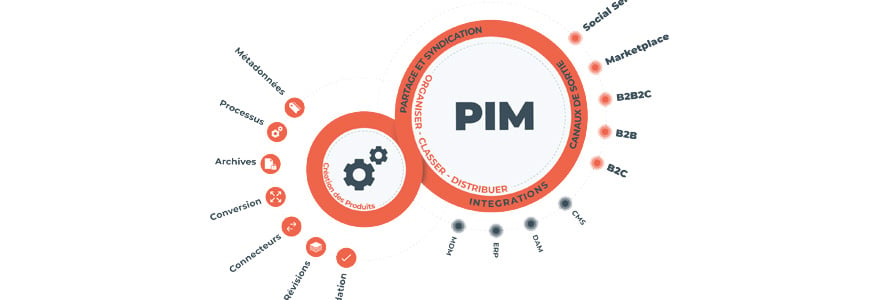Product Information Management or PIM is an essential process for businesses that rely on managing their product information. It is a complete solution that helps streamline the process of managing product-related data across the organization. With the PIM system in place, businesses can easily collect, enrich, and distribute product information across different systems and platforms. However, implementing a PIM solution is not an easy task. It involves several challenges such as integrating PIM with existing systems and architecture, choosing the right PIM solution, and maintaining proper data governance and maintenance. In this article, we will explore the basics of PIM and the key features of PIM, the best practices for implementing PIM, and some common challenges faced during PIM implementation. By the end of this article, readers will have a better understanding of how PIM works and the important role it plays in enhancing data quality, streamlining workflows, and improving customer experiences. So let's dive into the world of PIM and demystify the basics of Product Information Management.
Key Features of PIM
Include the ability to centralize and manage product information across various channels, such as eCommerce sites, mobile applications, and brick-and-mortar stores. PIM software enables the creation of rich, detailed product content that can be updated and shared across all channels in real-time. It also allows product data to be enriched with images, videos, and other multimedia content to enhance the customer experience. Additionally, PIM offers data validation and consistency checks to ensure that information is accurate and up-to-date. Overall, PIM helps organizations streamline their product information management processes and improve their overall efficiency. goaland.com provides more details.
- Centralized product information storage
- Multi-channel distribution capabilities
- Data quality management tools
- Collaboration and workflow management tools
- Localization and translation capabilities
- Advanced analytics and reporting
Integration of PIM with Other Systems
Product Information Management (PIM) is integral to managing the vast amount of data associated with products and their attributes. It allows businesses to centralize and streamline their product information, which is crucial to enhancing customer experience and increasing sales. Integration with other systems is essential to make the most of PIM, and this article will provide valuable insight into how to identify your integration requirements, choose the right integration approach, and monitor and maintain your integration strategy. These steps will help ensure a seamless integration between PIM and other business systems, improving overall productivity and efficiency.
Identify Your Integration Requirements
Before selecting a PIM solution, you need to identify the integration requirements of your existing systems. Identify the various systems such as ERP, CRM, and eCommerce platforms that need to be integrated with PIM.
Understand Your Existing Systems and Architecture
To avoid disruptions and ensure smooth integration, you need to understand the architecture of your existing systems. You should identify how the systems work together and how data is shared between them.
Choose the Right Integration Approach
Choose the right integration approach, such as real-time or batch processing, based on your business requirements. Identify the integration points, and map the data flow between the systems.
Monitor and Maintain Your Integration Strategy
Regularly monitor and maintain your integration strategy to ensure that data is flowing smoothly between systems without errors or redundancies. Plan to address any issues proactively and update your integration approach as your business needs evolve.
Best Practices for Implementing PIM
As businesses grow, so does their product information! With numerous products, specifications, and categories to manage, maintaining accurate and up-to-date product information can become overwhelming. Product Information Management (PIM) technology helps businesses streamline their product information processes, ensuring consistency and efficiency. However, implementing a PIM solution can bring its own set of challenges. In this article, we'll take a deep dive into the basics of PIM, its key features, how it integrates with other systems, best practices to implement it, and common challenges faced with PIM implementation.
Define Your Data Model
Create a comprehensive data model to define data fields, values, and hierarchies within your PIM solution. Define data fields' values, metadata and relationships between data elements.
Set Clear Goals and Objectives
Define clear goals and objectives for your PIM solution, such as improving product data quality, reducing time-to-market or enhancing customer experience.
Plan for Data Governance and Maintenance
Create a robust data governance framework that includes data quality checks, data standards, and data policies to ensure consistent and accurate data.
Choose the Right PIM Solution
Select the right PIM solution based on your business's unique requirements, such as the size of the product catalog, multi-lingual capabilities and total cost of ownership.
Common Challenges Faced with PIM Implementation
PIM implementation can be challenging, and businesses should be aware of the common challenges they may face:
- Resistance to change
- Difficulty in defining data model and taxonomy
- Insufficient data governance and governance policies
- Compatibility issues with other systems in the technology stack
- Complexity of integration and data migration
In conclusion, implementing a PIM solution increases productivity, streamlines processes, and improves data quality. By following the best practices, you can mitigate risks and overcome common challenges associated with PIM implementation. With careful planning and attention to detail, you can unlock the full potential of your PIM solution and drive success for your business.
